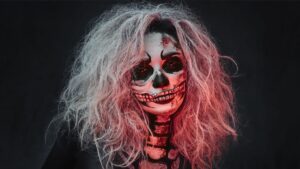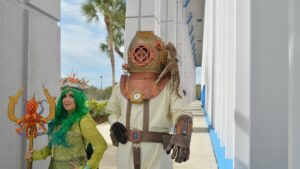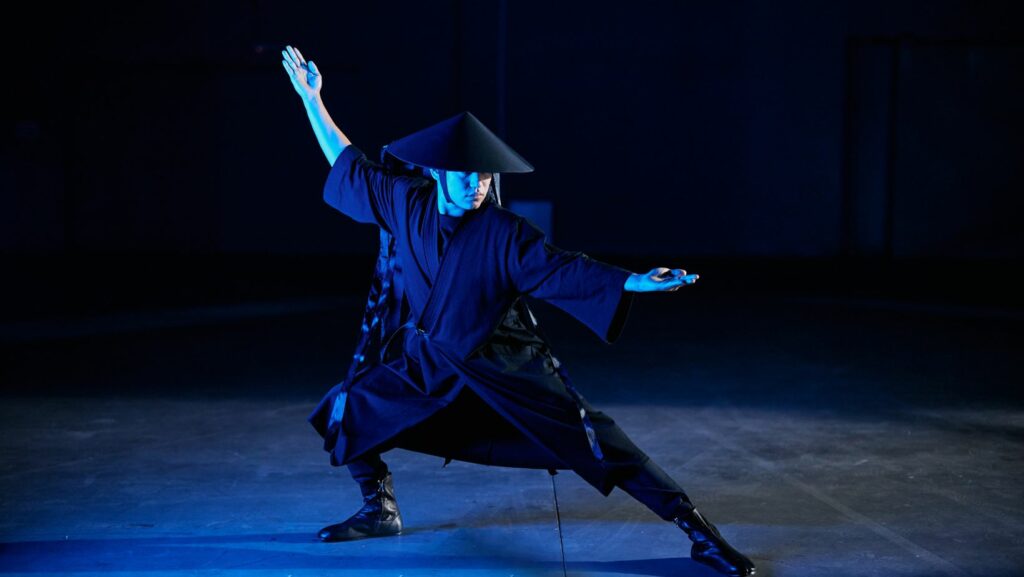Diving into the vibrant world of cosplay, it’s not just about donning a costume—it’s about embodying a character, right down to the last stitch. In this realm, cosplay patterns play a pivotal role, serving as a blueprint for transforming fantasy into reality.
Whether you’re a seasoned cosplayer or a newcomer eager to craft your first ensemble, understanding cosplay patterns can make or break your costume. They’re the unsung heroes of the cosplay world, guiding enthusiasts to create outfits that are as authentic as possible.
Cosplay Patterns
 Cosplay patterns serve as a vital foundation in the creation of unique and authentic costumes. They’ve carved a niche in the cosplay art, shaping the way intricate outfits are designed and made.
Cosplay patterns serve as a vital foundation in the creation of unique and authentic costumes. They’ve carved a niche in the cosplay art, shaping the way intricate outfits are designed and made.
In the early days, cosplayers often reverse-engineered costumes from rudimentary drawings or snapshots, sparking the evolution of cosplay patterns. Emerged in the 1990s, dedicated patterns became prevalent, providing a complex guide to constructing costumes. Publications like Otaku magazine helped popularize these patterns, offering fans an inside look into the creative process. In this article, we’ll explore the intricacies of cosplay patterns, their importance, and how they’ve revolutionized the art of cosplay. Let’s unravel the threads that weave together the captivating tapestry of cosplay.
Popular Types of Cosplay Patterns
 In an ocean of vivid imaginations and crafting creativity lie distinct types of cosplay patterns. Let’s dive into common varieties, examining anime and manga patterns, video game character patterns, and Western comics and movie patterns.
In an ocean of vivid imaginations and crafting creativity lie distinct types of cosplay patterns. Let’s dive into common varieties, examining anime and manga patterns, video game character patterns, and Western comics and movie patterns.
Dominated by popular Japanese culture, these patterns provide a blueprint for revered characters from anime series or manga comics. Cosplayers utilize such patterns to recreate iconic outfits like Goku from “Dragon Ball Z” or Naruto from the namesake series. Noteworthy in these designs is the emphasis on detailed facial expressions and elaborate costumes, a unique characteristic trait of anime and manga patterns.
Video game character patterns offer a gateway into the virtual world, allowing cosplayers to personify their favorite virtual heroes or villains. Ranging from Lara Croft of “Tomb Raider” to Geralt of Rivia from “The Witcher” series, these patterns cater to a variety of complex designs. Pertinent information such as specific measurements, material type, even the tiniest accessory details constitute an essential part of these comprehensive game character patterns.
Crafting Techniques for Cosplay
 Harnessing the right crafting techniques forms the foundation of the perfect cosplay outfit. It’s within the skillset of these techniques that cosplay patterns spring to life.
Harnessing the right crafting techniques forms the foundation of the perfect cosplay outfit. It’s within the skillset of these techniques that cosplay patterns spring to life.
Becoming proficient in basic sewing and assembling methodologies forms the groundwork of cosplay construction. It includes understanding diverse types of stitching, such as running stitch, backstitch, and overlock stitch, which contribute to the aesthetics and durability of the attire. Use of measurement tools like tape measures and rulers are pivotal for precise assembly. For instance, in anime cosplay, precision is key in maintaining character authenticity.
Advanced Crafting: Molding and 3D Printing
As cosplay grows in popularity, so does the inclusion of intricate, advanced crafting techniques. Molding and 3D Printing offer cosplayers an avenue to create complex and detailed accessories with incredible likeness. Silicone, resin, and thermoplastic are common materials involved in molding, producing highly accurate replicas of weapon props like Goku’s Power Pole or Thor’s Mjölnir. In a similar vein, 3D printing utilizes CAD files to create physical models, providing unparalleled precision. This technique shines particularly in video game cosplay patterns, where intricate details can be replicated flawlessly.
Tips for Customizing Cosplay Patterns
Customizing cosplay patterns to personal measurements and style improves the fit and authenticity of the outfit. Let’s dwell into the methods of modifying patterns for a superior fit and including unique design details.
Correct fit—integral to costume authenticity—demands diligent pattern alteration. Start by taking precise measurements of your body. Use these measurements to adjust the original pattern, adapting it to your body type. Remember, alterations aren’t limited to size; they extend to the pattern’s length and breadth to preserve proportions and maintain character authenticity. For instance, cosplayers recreating a video game costume often tweak the pattern length to match the character’s height, vital for an authentic portrayal.

